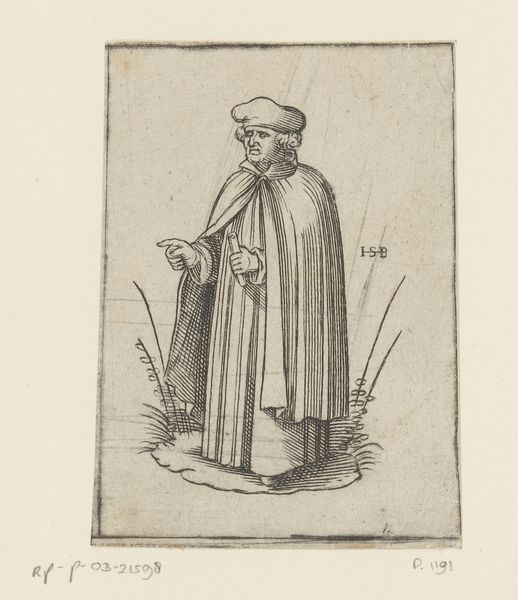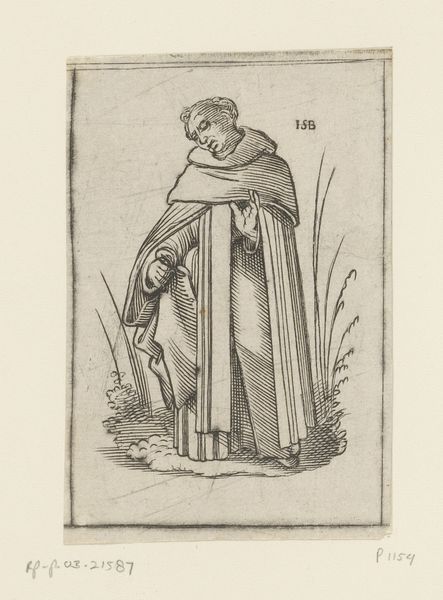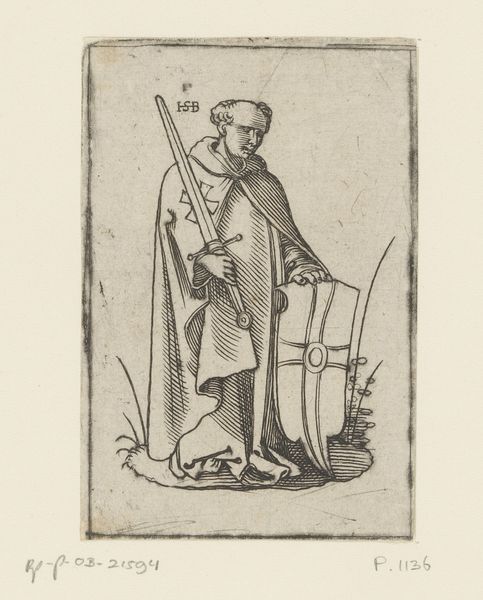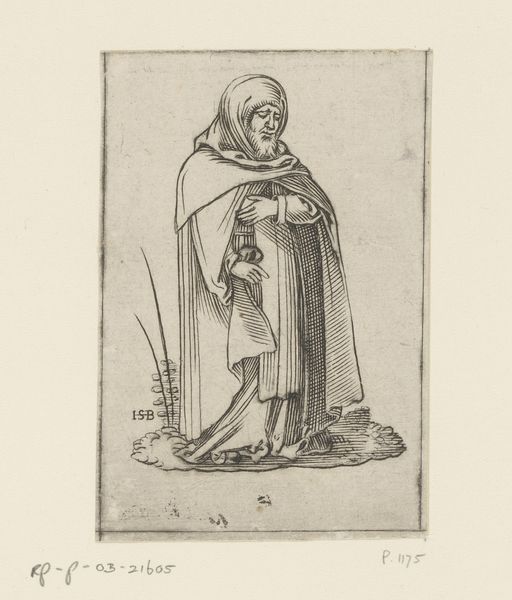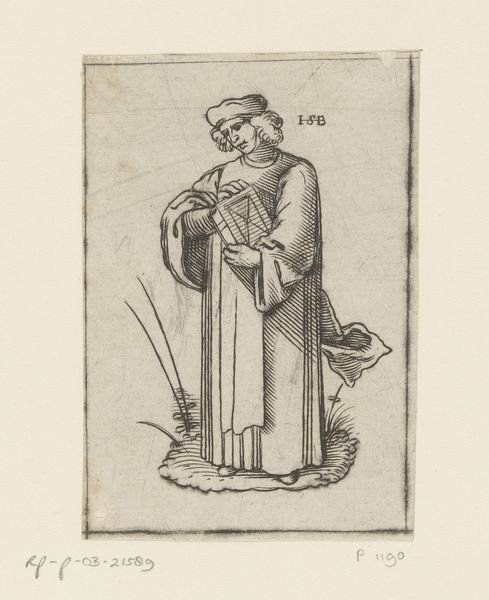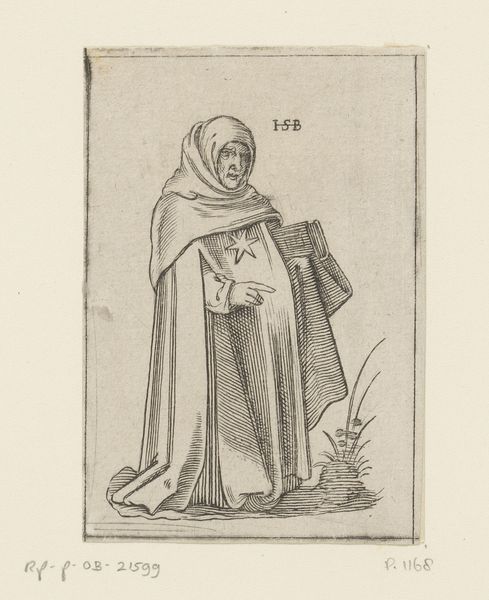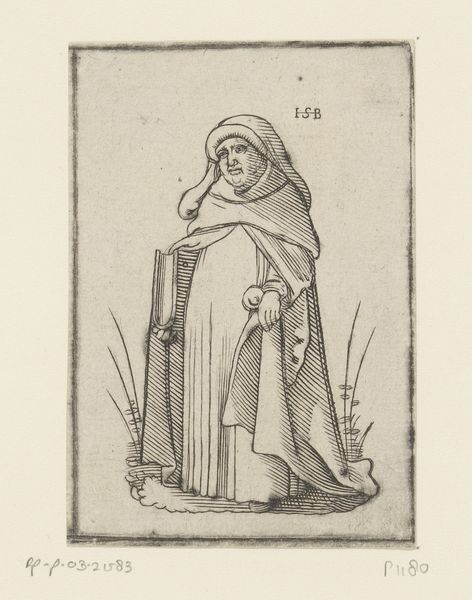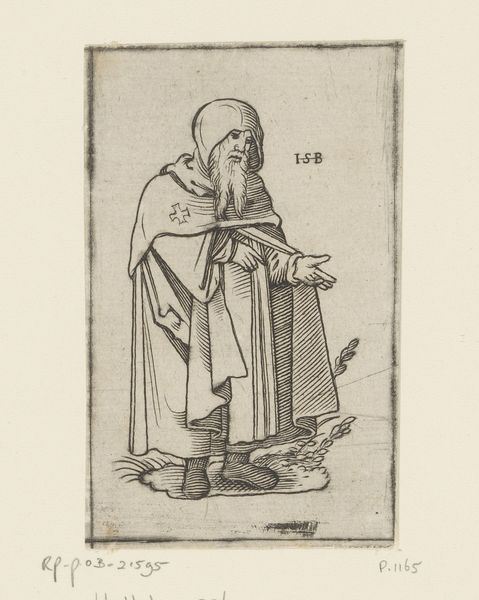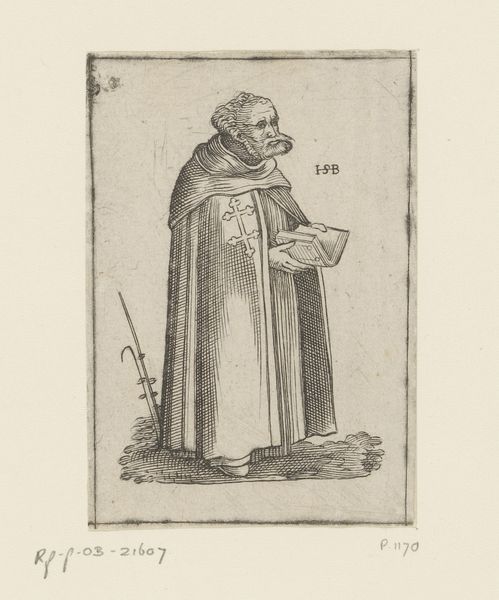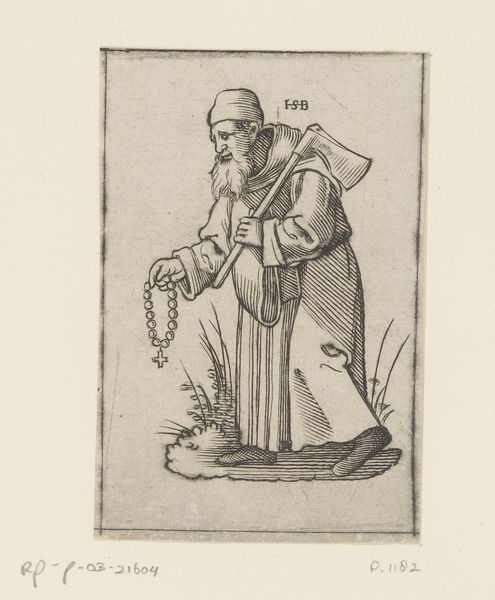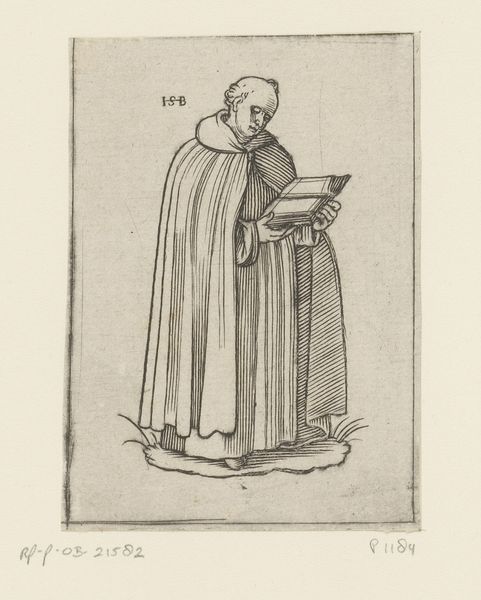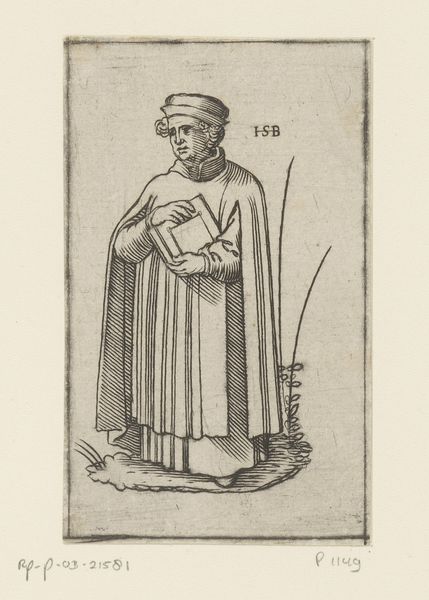
print, engraving
#
portrait
#
comic strip sketch
#
light pencil work
#
medieval
# print
#
pen sketch
#
old engraving style
#
figuration
#
personal sketchbook
#
sketchwork
#
pen-ink sketch
#
line
#
sketchbook drawing
#
storyboard and sketchbook work
#
sketchbook art
#
engraving
Dimensions: height 98 mm, width 63 mm
Copyright: Rijks Museum: Open Domain
Curator: This engraving from after 1526 depicts a “Monk of the Celestine Order,” part of the collection at the Rijksmuseum. Editor: The most immediate impression is its starkness—the image feels somewhat forlorn despite its precision. Curator: Indeed. Note the linear quality—it's characteristic of the period’s printmaking. Each stroke carefully placed, giving form to the monk’s habit and the stylized ground beneath his feet. The lines create a sense of texture. Editor: Those parallel lines establish depth. They’re interesting formally but do suggest an austerity and a world constricted by rules, fitting for a monk, no? The initials, I-S-B at the top of the engraving, invite speculation too. Who was this person memorialized through repetition in line? Curator: Possibly, yet Celestine monks are intriguing in this period. They were known for their extreme asceticism and withdrawal from the world. The engraving might then function less as a depiction and more as a symbol. His dress, a mark of both status and isolation, signals devotion but also separation. Editor: Right, but visually, he’s oddly approachable given that commitment to separation. The texture given his cowl actually invites tactility. A fascinating contradiction between his order’s mandates, the intent behind the printing, and this invitation we sense so strongly when facing the work. Curator: It speaks to the paradox at the heart of religious life during the period: simultaneous communion with, and separation from, the earthly realm. Print culture allowed ideas about piety and monasticism to be widely disseminated. The medium thus challenges as much as commemorates the man it purports to show. Editor: So, this portrait invites a multilayered viewing. Looking closely we start seeing complex patterns across visual and cultural history. Curator: Yes, these intentional lines remind us to be still and find meaning through contemplation, not just passive observation. A mirror of his devotion.
Comments
No comments
Be the first to comment and join the conversation on the ultimate creative platform.
